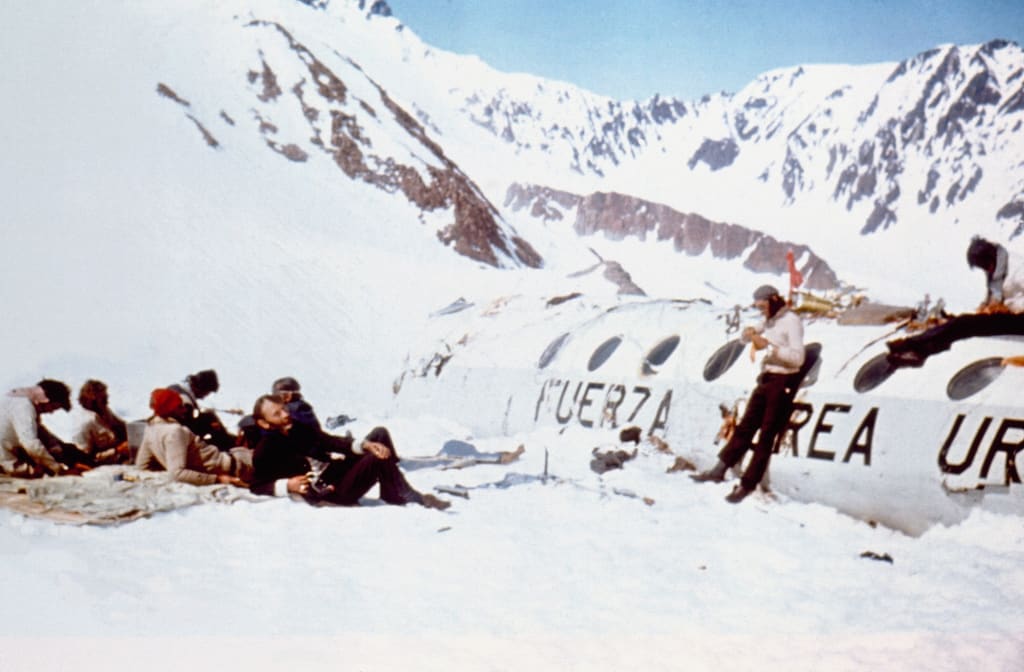Mystery of Andes
Andes Mystery

On October 12, 1972, a chartered Uruguayan Air Force Fairchild FH-227D aircraft departed from Uruguay, South America, en route to Santiago, the capital of Chile. The passengers were mainly rugby players, along with some family and friends, totaling 45 individuals. Typically, the flight would take approximately three hours to traverse the distance between Uruguay and Santiago. However, this route required the aircraft to traverse the colossal Andes Mountains, the world's longest mountain range, presenting a unique challenge to their journey. The Andes Mountains, aside from the Himalayas, house the highest peaks on Earth, presenting a breathtaking yet perilous landscape.
On that fateful day of October 12, a storm brewed in the mountains, making the flight treacherous. Consequently, the pilots chose to pause their journey and land in Mendoza, Argentina for the night. They anticipated resuming their journey the following day, October 13. At 2:18 p.m. on the 13th, the plane took off once more, the pilots ensuring that the weather had cleared up for a smoother flight. At 3:21 p.m., as the plane commenced its descent, it encountered violent turbulence, shaking the aircraft horizontally. The plane veered dangerously close to a mountain as clouds obscured the view. The pilots, frantically attempting to avert disaster, attempted to gain altitude to clear the mountain. Tragically, they were too late—the rear of the aircraft collided with the mountain during the ascent, resulting in a catastrophic separation of the plane's rear portion.
This devastating collision left the survivors stranded on an unknown mountain within the Andes, at an altitude of approximately 3,570 meters. Shockingly, despite the horrific crash and substantial loss of life, 33 individuals miraculously survived. However, they were now confronted with the harsh reality of their situation—they were injured, stranded, and lacked a clear understanding of their location and the perils they would soon face.
Initially, 19-year-old Roberto Canessa and 20-year-old Gustavo Zerbino, both medical students, took on the responsibility of tending to the survivors. They assessed the injured passengers, providing what care they could under the circumstances. Meanwhile, the Chilean Air Search and Rescue Service commenced a search operation immediately after the plane's disappearance. However, locating the crash site in the vast and snowy Andes proved exceedingly difficult. Despite their efforts, the survivors were not located during the initial search, and their situation grew increasingly dire.
As they waited for rescue, the survivors grappled with the harsh reality of their circumstances. They had little food and faced extreme cold and altitude sickness. The nights were especially brutal, with temperatures dropping to -30°C. To combat the cold, they used the remains of the plane as shelter, utilizing luggage, seats, and snow to create a barrier to retain warmth.
Days turned into weeks, and the survivors' hope dwindled as food supplies ran perilously low. They began rationing what little they had, but it was evident that their provisions would not sustain them for long. The harsh reality of their predicament set in—without intervention, their chances of survival were grim. The situation forced them into an unimaginable decision—faced with starvation and no alternative food source, they chose to consume the flesh of the deceased passengers.
On the 16th day following the crash, Fernando Parrado, who had been in a coma due to a skull fracture, regained consciousness. Parrado faced the heartbreaking loss of his mother and sister, who had both perished in the crash. He fought to keep his sister alive, but tragically, she succumbed to her injuries. This loss served as a poignant reminder of the uncertainty and fragility of life.
Their harrowing ordeal continued, marked by the relentless struggle for survival against the elements and the passage of time. As they battled starvation and desperation, an avalanche struck, claiming additional lives and further limiting their already scant resources. By the 70th day after the crash, only 16 survivors remained, struggling to endure.
It was during this bleak period that a spark of hope emerged. On December 20, 1972, after enduring a 10-day trek, three survivors—Fernando Parrado, Roberto Canessa, and Antonio Vizintin—stumbled upon a river and a glimpse of civilization. Exhausted and near the limits of their endurance, they encountered a Chilean farmer, Sergio Catalan, who provided the crucial link to their rescue. After a grueling 72 days, the survivors' incredible story of survival and resilience had reached its turning point.
Their tale, famously known as the "Miracle of the Andes," captivated the world, showcasing the indomitable human spirit and the will to survive against insurmountable odds. The survivors' incredible journey is a testament to the strength of the human will and the depths of determination in the face of unfathomable adversity. Their story remains a beacon of hope, reminding us that even in the bleakest moments, the human spirit can endure and ultimately triumph. The "Miracle of the Andes" serves as a timeless reminder that, in the face of extreme circumstances, the human capacity to survive and persevere knows no bounds.





Comments
Just because I feel like it is not accepting comments at the moment
Want to show your support? Send them a one-off tip.